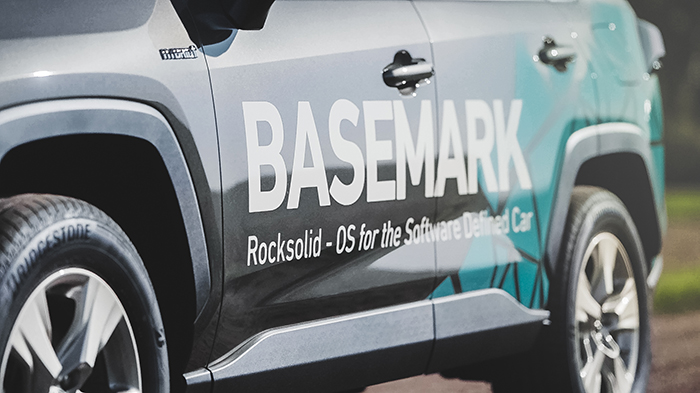Basemark, a leading software enterprise specializing in automotive software, has today announced the European tour of its pilot car running its Rocksolid Core platform. The car’s first stop is in Gothenburg at VECS 2022 during May 17-18, 2022. From Gothenburg, the pilot car will continue its tour to Germany, France, and Italy.
This is the first real-life demonstration of a car based on the advanced software and hardware architecture enabled by the Rocksolid Core platform. Key demonstrations include ADAS functions such as Lane-Keeping Assistance, Adaptive Cruise Control, Driver Monitoring System and instrument cluster running on the same ECU. This ground-breaking feature enables OEMs to transition to a centralized architecture and reach thereby significant performance and power consumption advantages, as well as substantial BoM (bill of materials) cost savings.
What makes Rocksolid Core unique for automotive OEMs is that it enables the development and implementation of these existing features and upcoming features a lot faster, easier, and more cost-efficiently than with traditional systems.
This is due to Rocksolid Core architecture requiring fewer processors compared to conventional models, resulting in cost savings in both electronics and software. For example, with Rocksolid Core, ADAS functions, the digital instrument cluster, and heads-up display can be run with just one electronic control unit (ECU) – as they previously required multiple ECUs.
Rocksolid Core reduces chip vendor lock for automotive OEMs. Applications developed on Rocksolid Core can be deployed to various target hardware more easily. This “code once, deploy to multiple platforms” approach makes it easier for OEMs to use alternative chips or use fewer chips overall by utilizing software to a greater extent across their entire portfolio of cars.
Running advanced eye-tracking-based driver monitoring system set to be mandated by EU
The pilot car brings to life Rocksolid Core’s eye-tracking-based driver monitoring system that notices driver drowsiness or distraction by following the driver’s gaze. It detects drowsiness, impairment, or distraction by the driver’s eye and head movements and reacts accordingly. Using eye-tracking instead of handgrip on the wheel as an indicator could provide an even safer way for engineers to rethink the driver’s actions that may lead to accidents. Driver monitoring systems are now set to be mandated by the European Union in all new cars by 2026. With the new regulation in place, it is believed at least 140,000 serious injuries will have been avoided by 2038.

COMMENTS